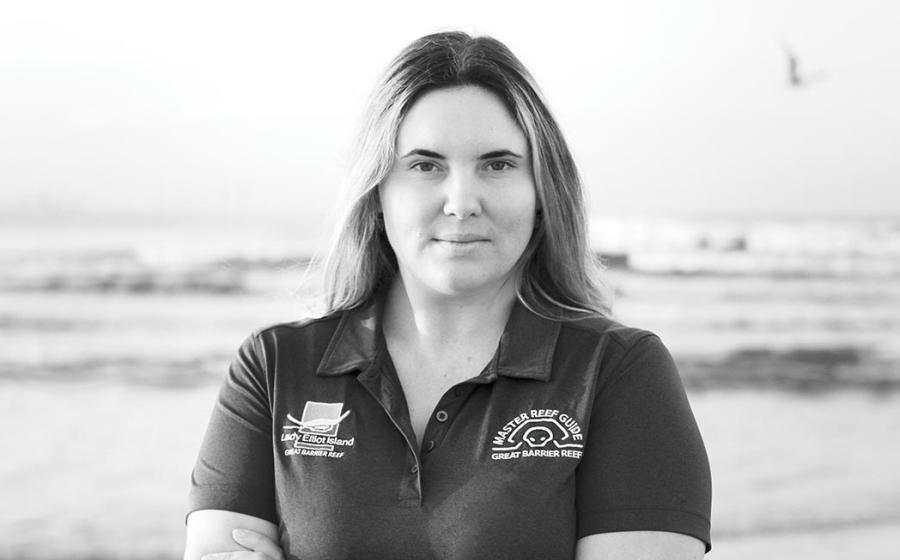Ask An Instructor - July 2007
July 2007
By Selene Yeager
Photograph by Joseph Byrd
Q: I have a friend who wants to learn to dive, but she has some face piercings and is worried that they would interfere with her ability to dive. Do you think piercings in the lip or cheek would leak water?
A: Although it's possible that very small quantities of water would leak through piercings, it's extremely unlikely that enough water would leak to create a concern. It is, in fact, more likely that the pressure of the water would force the tissue around the piercing to make a tighter seal, allowing no water to leak at all.
A better question to ask would be about the positioning of the piercings and the type of accessories worn in them. Some kinds of piercing accessories could interfere with a diver's ability to hold a regulator mouthpiece in her mouth comfortably and safely. However, this problem should be easily resolved either by removing the accessory during the dive or by selecting one that doesn't interfere. Tell your friend that if she takes just a couple of precautions, the pool is open.
Q: On a recent dive, a friend of mine entered the water with his air turned off. He feels the divemaster working on the boat that day was responsible and even complained to the management of the operation he was diving with. I think he and his buddy were responsible. Who is right?
A: You are. Every diver is responsible for him or herself, and secondary responsibility falls on the diver's buddy, who should complete a buddy gear check before every dive. This is information every diver learns in the first pool session of open-water class. It is important to remember that no one can keep you safe except for yourself. When you sign up with a charter boat, you're paying for a safe ride to the dive site. Some dive operators use crew who are also qualified as divemasters or instructors to provide a bit of a safety net for the divers on their boat, but many operators do not offer this service, largely because of divers who unreasonably expect the crew to think, swim and breathe for them. There's a lot of liability involved in thinking for someone else, and it is unfortunate when divers come to expect it, because it discourages operators from providing some services to divers who realize that we are all responsible for ourselves.
Q: I'm embarrassed to be asking this simple question, but I dive by computer all the time and I seem to have forgotten a simple rule of diving by the tables. Let's say I make a simple dive, straight down to 80 feet. According to NAUI tables, my maximum no-decompression dive time is 35 minutes. Since the safety stop is three minutes long, is my actual maximum allowable time at 80 feet 32 minutes? Or is it 35 minutes at 80 feet plus my three minutes at 15 feet?
A: The only embarrassing question is the one you fail to ask, and this one is extremely common. Bottom time begins when a diver leaves the surface for the descent to the bottom, and it ends when the diver leaves the bottom for an uninterrupted ascent back to the surface. In this case, "uninterrupted" means that you do not descend back to depth or stop your ascent in water deep enough to allow the continued loading of nitrogen or other gases. An ascent back to 15 feet would not qualify as an interruption of your ascent. So, the answer to your question is that you would be allowed 35 minutes from the time you leave the surface to the time you begin your ascent. The three minutes at 15 feet don't count toward your bottom time. As an added safety note, many experts now recommend a five-minute safety stop instead of three minutes, especially on dives deeper than three atmospheres or 66 feet.
Q: I went diving a few days ago at a site where I had to carry my gear a long distance. Even after several days, my arm still hurts. How do I know if it is the result of my sedentary lifestyle or the result of decompression sickness? My dives were fairly shallow, only 40 feet, so I can't be bent, right?
A: Wrong. Divers can get bent even in shallow water if they exceed table limits, ascend too fast, have risk factors for DCS or, in some rare cases, when none of these things apply. However, it is exceedingly rare for recreational divers using standard-size cylinders to get bent in water 40 feet or less in depth. The simplest way to assess whether your pain is from DCS or exertion is to perform a self-exam. If the pain changes when you move or massage the area, it is unlikely to be DCS. DCS-related joint pain is usually consistent no matter how you position yourself or even if you massage the affected area. The best and safest method for assessing the type of injury you have, however, is to be checked out by your doctor.
Got a question you need answered?
E-mail it to [email protected], or write to Ask An Instructor, 6600 Abercorn St., Suite 208, Savannah, GA 31405.
July 2007
By Selene Yeager
Photograph by Joseph Byrd
Q: I have a friend who wants to learn to dive, but she has some face piercings and is worried that they would interfere with her ability to dive. Do you think piercings in the lip or cheek would leak water?
A: Although it's possible that very small quantities of water would leak through piercings, it's extremely unlikely that enough water would leak to create a concern. It is, in fact, more likely that the pressure of the water would force the tissue around the piercing to make a tighter seal, allowing no water to leak at all.
A better question to ask would be about the positioning of the piercings and the type of accessories worn in them. Some kinds of piercing accessories could interfere with a diver's ability to hold a regulator mouthpiece in her mouth comfortably and safely. However, this problem should be easily resolved either by removing the accessory during the dive or by selecting one that doesn't interfere. Tell your friend that if she takes just a couple of precautions, the pool is open.
Q: On a recent dive, a friend of mine entered the water with his air turned off. He feels the divemaster working on the boat that day was responsible and even complained to the management of the operation he was diving with. I think he and his buddy were responsible. Who is right?
A: You are. Every diver is responsible for him or herself, and secondary responsibility falls on the diver's buddy, who should complete a buddy gear check before every dive. This is information every diver learns in the first pool session of open-water class. It is important to remember that no one can keep you safe except for yourself. When you sign up with a charter boat, you're paying for a safe ride to the dive site. Some dive operators use crew who are also qualified as divemasters or instructors to provide a bit of a safety net for the divers on their boat, but many operators do not offer this service, largely because of divers who unreasonably expect the crew to think, swim and breathe for them. There's a lot of liability involved in thinking for someone else, and it is unfortunate when divers come to expect it, because it discourages operators from providing some services to divers who realize that we are all responsible for ourselves.
Q: I'm embarrassed to be asking this simple question, but I dive by computer all the time and I seem to have forgotten a simple rule of diving by the tables. Let's say I make a simple dive, straight down to 80 feet. According to NAUI tables, my maximum no-decompression dive time is 35 minutes. Since the safety stop is three minutes long, is my actual maximum allowable time at 80 feet 32 minutes? Or is it 35 minutes at 80 feet plus my three minutes at 15 feet?
A: The only embarrassing question is the one you fail to ask, and this one is extremely common. Bottom time begins when a diver leaves the surface for the descent to the bottom, and it ends when the diver leaves the bottom for an uninterrupted ascent back to the surface. In this case, "uninterrupted" means that you do not descend back to depth or stop your ascent in water deep enough to allow the continued loading of nitrogen or other gases. An ascent back to 15 feet would not qualify as an interruption of your ascent. So, the answer to your question is that you would be allowed 35 minutes from the time you leave the surface to the time you begin your ascent. The three minutes at 15 feet don't count toward your bottom time. As an added safety note, many experts now recommend a five-minute safety stop instead of three minutes, especially on dives deeper than three atmospheres or 66 feet.
Q: I went diving a few days ago at a site where I had to carry my gear a long distance. Even after several days, my arm still hurts. How do I know if it is the result of my sedentary lifestyle or the result of decompression sickness? My dives were fairly shallow, only 40 feet, so I can't be bent, right?
A: Wrong. Divers can get bent even in shallow water if they exceed table limits, ascend too fast, have risk factors for DCS or, in some rare cases, when none of these things apply. However, it is exceedingly rare for recreational divers using standard-size cylinders to get bent in water 40 feet or less in depth. The simplest way to assess whether your pain is from DCS or exertion is to perform a self-exam. If the pain changes when you move or massage the area, it is unlikely to be DCS. DCS-related joint pain is usually consistent no matter how you position yourself or even if you massage the affected area. The best and safest method for assessing the type of injury you have, however, is to be checked out by your doctor.
Got a question you need answered?
E-mail it to [email protected], or write to Ask An Instructor, 6600 Abercorn St., Suite 208, Savannah, GA 31405.










